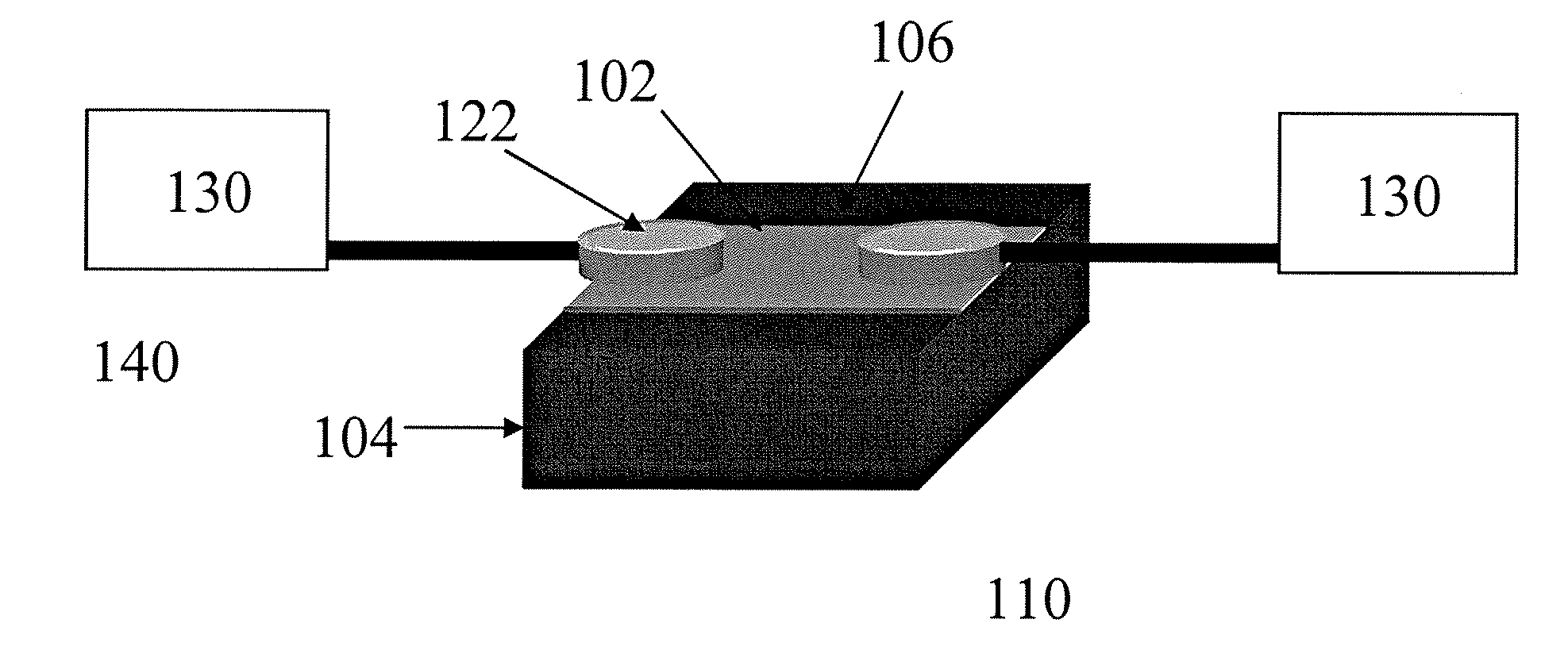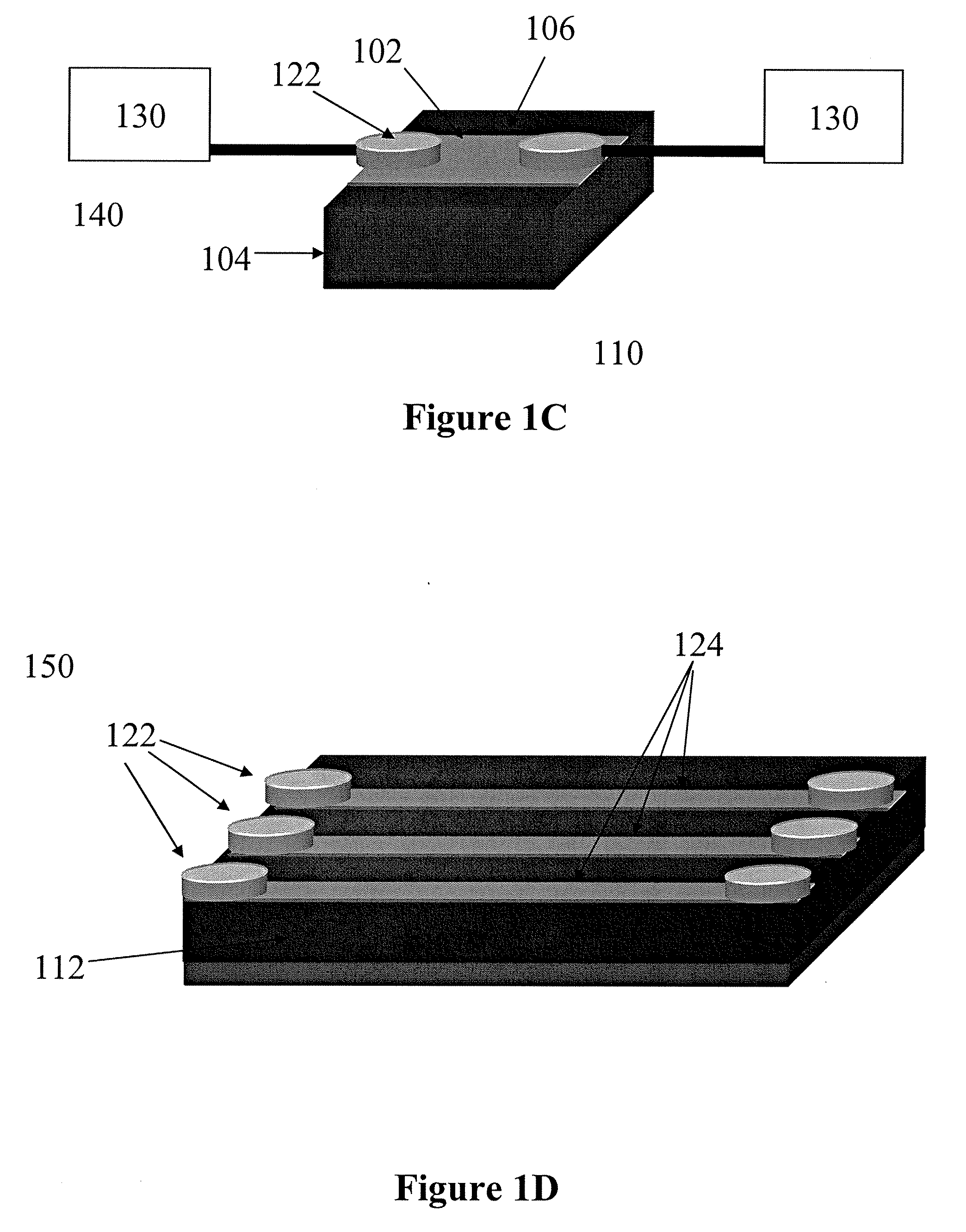Electromagnetic and Thermal Sensors Using Carbon Nanotubes and Methods of Making Same
a technology of carbon nanotubes and electrical and thermal sensors, applied in the field of carbon nanotube fabrics and methods of making same, can solve the problems of high background noise, many ir sensors are expensive, and the detection device is less efficient, so as to reduce the noise 1/f
- Summary
- Abstract
- Description
- Claims
- Application Information
AI Technical Summary
Benefits of technology
Problems solved by technology
Method used
Image
Examples
Embodiment Construction
[0105]Various embodiments of the invention provide carbon nanotube fabrics for use in electromagnetic radiation detecting and sensing systems and methods of making the same.
[0106]Broad-range electromagnetic radiation sensors and detectors may be constructed with nanotube fabrics. Carbon nanotubes have unique electrical and thermal properties that make them excellent materials for electromagnetic radiation and, specifically thermal detection. Fabrics constructed from carbon nanotubes have the capability of sensing a wide spectrum of radiation, from Gamma Rays (□0.1 cm). With very low metal contamination levels, nanotube fabrics can be readily deposited on a variety of substrates and can be integrated with CMOS technology. The attributes of carbon nanotubes and carbon nanotube fabrics make them an excellent and high-performance material when used in electromagnetic and thermal detectors. The performance advantages of detectors (e.g. microbolometers) constructed with carbon nanotube fa...
PUM
 Login to View More
Login to View More Abstract
Description
Claims
Application Information
 Login to View More
Login to View More - R&D
- Intellectual Property
- Life Sciences
- Materials
- Tech Scout
- Unparalleled Data Quality
- Higher Quality Content
- 60% Fewer Hallucinations
Browse by: Latest US Patents, China's latest patents, Technical Efficacy Thesaurus, Application Domain, Technology Topic, Popular Technical Reports.
© 2025 PatSnap. All rights reserved.Legal|Privacy policy|Modern Slavery Act Transparency Statement|Sitemap|About US| Contact US: help@patsnap.com



